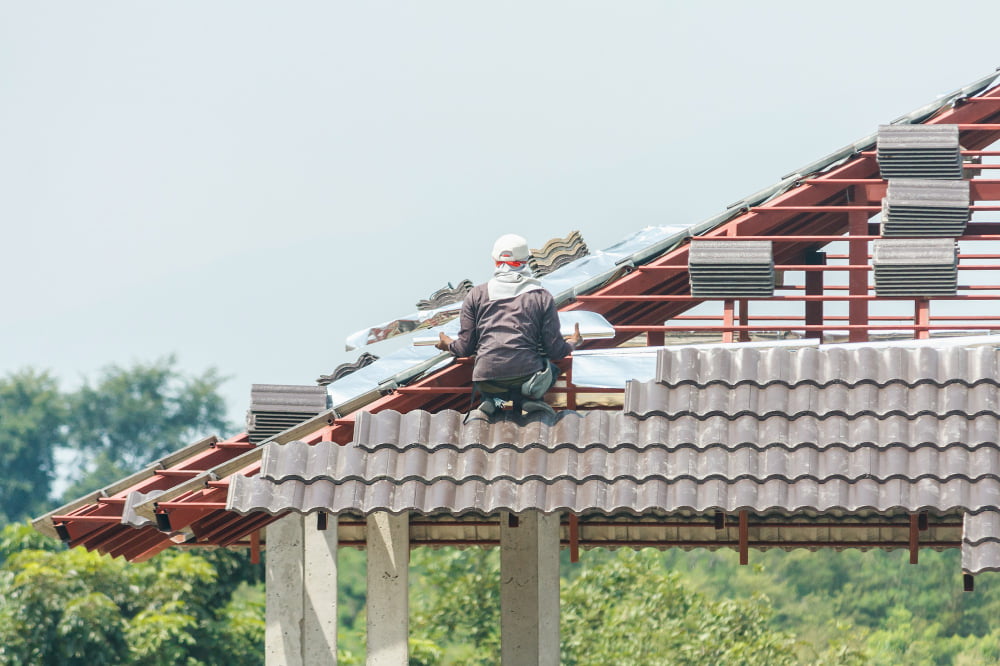Last updated on
Are you tired of dealing with leaky roofs, shoddy repairs, and constantly increasing energy bills? Have you postponed replacing your roof due to a lack of information or fear of the daunting process? If so, you’re not alone. Roofing has become a neglected aspect of home maintenance for many homeowners.
However, neglecting your roof can result in costly damages and major headaches in the long run. But fear not! The roofing industry is experiencing a resurgence with advanced technologies and materials that make roof replacement an efficient and cost-effective solution.
In this blog post, we’ll walk through essential steps to ensure a successful roof replacement project that will not only protect your home but also increase its value.
Finding the Right Experts

The first step towards a successful roof replacement is finding the right experts. Having professional, reliable, and experienced roofing contractors on your side can make the entire process less stressful and more efficient.
Start by doing thorough research on local experts specializing in roof replacements, and look for licenses, certifications, and references from previous clients to ensure their credibility. It’s also important to consider the type of roof you have and the materials you want to use for replacement. This information will help you narrow down your options and find experts with the right expertise and experience for the job.
Budget Planning
An integral part of the roof replacement process is planning your budget. It’s important to recognize that while a roof replacement can be a significant investment, it can also save you money in the long run by reducing energy costs and preventing costly repairs caused by neglect.
Start by getting a quote from your chosen roofing expert, which should include costs for labor, materials, and any necessary permits. Don’t forget to factor in potential costs for unexpected repairs, as issues like rot or structural damage can often be uncovered during the replacement process. Always plan a contingency budget of around 10-20% above the quoted cost to cover these unforeseen expenses.
Securing Necessary Permits

Another vital aspect of the roof replacement process is securing the necessary permits. Ensuring you have the required permissions in place before starting your project is key to avoiding potential legal issues or fines. The specific permits you’ll need will vary based on your location and the scope of your project.
Your chosen roofing expert should be able to guide you through this process as part of their service. However, it’s always a good idea to do your research too. Check with your local building department or city hall to understand the specific requirements in your area. Bear in mind that this process could take some time, so it’s best to start early. Proper preparation is critical to ensure a smooth and hassle-free roof replacement project.
Scheduling and Timing
Arguably, one of the most crucial aspects of a successful roof replacement project is proper scheduling and timing. To start, it’s important to discuss a clear schedule with your roofing contractor. They should provide you with a timeline, including the start date, key milestones, and the expected completion date.
Keep in mind that roofing projects can be subject to delays due to weather conditions, so it’s best to plan your project during a season with typically milder and reliable weather. In many regions, late spring to early fall tends to be an optimal time for roofing work.
It’s also important to consider how the roofing project will align with your schedule. You’ll want to be available to oversee the project, handle any issues that arise, and ensure the work is going as planned.
If necessary, make arrangements for any disruptions this may cause to your daily routine. Remember, good communication with your contractor throughout the process can help ensure that the project stays on schedule and any potential issues are addressed promptly.
Clear Communication
Effective communication is the backbone of any successful roof replacement project. Good communication with your roofing contractor can help prevent misunderstandings, ensure that your expectations are met, and keep the project on track. From the beginning, clearly express your vision for the project, your budget, and any specific materials or techniques you want to use.
It’s also important to ask questions and stay updated on the project’s progress. Make sure your contractor is always available to answer your queries or discuss any concerns that may arise during the project. Regular meetings or updates can help avoid potential problems and will ensure that both you and your contractor are on the same page throughout the process.
The Takeaway
A successful roof replacement project requires proper planning, finding the right experts, and clear communication. By following these essential steps and working closely with your chosen roofing contractor, you can ensure that your new roof not only provides protection for your home but also adds value for years to come. Don’t wait until it’s too late – start planning for your roof replacement today!
Recap:



